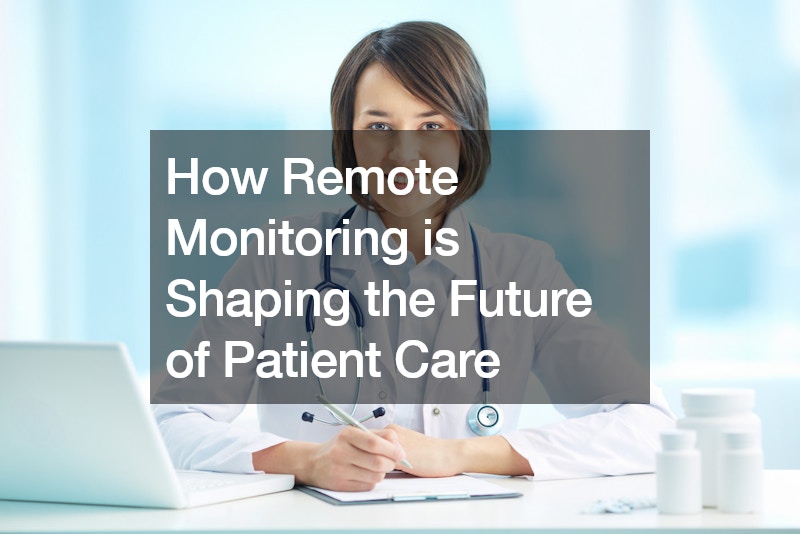Remote patient monitoring (RPM) has been a game-changer in the healthcare industry, particularly in the wake of the COVID-19 pandemic. As technology continues to evolve, RPM is becoming a crucial tool in enhancing patient care, improving outcomes, and addressing healthcare challenges in innovative ways. In this blog post, we will explore how RPM is shaping the future of patient care, highlighting current applications, future trends, and the potential benefits for both patients and healthcare providers.
The Rise of Remote Patient Monitoring
Remote patient monitoring refers to the use of technology to collect health data from patients outside of traditional clinical settings. This approach allows healthcare providers to track patients’ health metrics in real time, offering a more comprehensive view of their well-being.
The adoption of RPM has seen significant growth since its inception, especially with advancements in wearable technology and digital health tools.
Current Applications of Remote Monitoring
RPM technologies are currently being used across various healthcare domains, addressing chronic diseases, fall prevention, and even everyday health management.
1. Chronic Disease Management
One of the primary applications of RPM is in managing chronic diseases such as hypertension, diabetes, and chronic obstructive pulmonary disease (COPD). By using devices that monitor blood pressure, blood sugar levels, and lung function, healthcare providers can keep a close watch on patients’ conditions without requiring frequent office visits. This continuous monitoring helps in the early detection of potential complications, allowing for timely interventions and adjustments to treatment plans. A chronic care management app for doctors can facilitate this process by integrating data from these devices, streamlining the management of chronic conditions, and providing a platform for ongoing patient engagement and support.
2. Fall Prevention for the Elderly
RPM is also making strides in fall prevention, especially for the elderly. Technologies such as wearable devices equipped with sensors can monitor gait and detect falls. For instance, sophisticated systems can analyze gait patterns through wearables and use artificial intelligence to identify individuals at higher risk of falling. This proactive approach not only helps in preventing falls but also provides a virtual platform for patients to engage in fall-reduction exercises and track their progress.
3. Everyday Health Management
Beyond chronic diseases and fall prevention, RPM is being utilized for general health management. Devices that measure vital signs like heart rate and oxygen levels are becoming commonplace. These tools allow patients to manage their health daily, providing them and their healthcare providers with valuable data that can be used to adjust treatment or preventive measures as needed.
The Future of Remote Patient Monitoring
Looking ahead, the future of RPM promises even more transformative changes in how healthcare is delivered and managed. Several trends and advancements are expected to shape the future of remote monitoring, offering new opportunities for improving patient care.
1. Passive Monitoring and Predictive Analytics
One of the most exciting developments in RPM is the shift towards passive monitoring combined with predictive analytics. Future RPM systems will focus on continuously collecting data from patients through integrated devices and using advanced algorithms to identify potential health issues before they become critical. For example, wearable devices may soon be able to detect early signs of conditions like high blood pressure or irregular heart rhythms, enabling healthcare providers to intervene early and prevent serious health events.
2. Integration with Everyday Technology
The future of RPM also involves deeper integration with everyday technology. For instance, wearable devices such as smartwatches and fitness trackers are expected to become more sophisticated, incorporating features that can monitor a wider range of health metrics. These devices could be equipped with sensors and software capable of tracking health conditions and alerting users and their healthcare teams about potential issues, all without requiring additional gadgets.
3. Expansion of Remote Monitoring Programs
As RPM technology evolves, there will be an increased focus on expanding remote monitoring programs across different patient populations and health conditions. Health systems will need to develop robust infrastructures to handle the influx of data from these programs. This includes creating or adopting platforms that can efficiently capture, analyze, and respond to health data. The goal will be to streamline these processes so that they are manageable and effective, even for smaller healthcare practices.
Benefits for Patients and Healthcare Providers
The advancements in RPM technology offer numerous benefits for both patients and healthcare providers, making it a pivotal aspect of modern healthcare.
1. Enhanced Patient Engagement and Self-Management
RPM tools empower patients to take an active role in managing their health. With access to real-time data about their health conditions, patients can make informed decisions about their treatment and lifestyle choices. This increased engagement often leads to better adherence to treatment plans and healthier behaviors, ultimately improving patient outcomes.
2. Reduced Healthcare Costs
By enabling remote monitoring and early intervention, RPM helps reduce the need for in-person visits and emergency care. This not only lowers healthcare costs for patients but also decreases the strain on healthcare systems. Early detection of issues through RPM can prevent costly hospitalizations and procedures, leading to more efficient and cost-effective healthcare delivery.
3. Alleviating Physician Burnout
RPM also offers solutions for reducing physician burnout, a growing concern in the medical field. By automating routine monitoring tasks and using dedicated teams for data management, RPM systems can relieve physicians of some of their workload. This allows them to focus on more complex and critical aspects of patient care, which can lead to increased job satisfaction and reduced burnout.
In Summary
Remote patient monitoring is transforming the future of patient care through innovative technologies and approaches. From chronic disease management and fall prevention to the development of passive monitoring systems and integration with everyday technology, RPM is set to play a central role in modern healthcare. As these technologies continue to evolve, they promise to enhance patient engagement, reduce healthcare costs, and support healthcare providers in delivering high-quality care. The future of RPM is bright, offering exciting opportunities for advancements in patient care and the overall healthcare experience.
.


